Muscimol 蝇蕈醇; Agarin; Agarine,98.0%
产品编号:Bellancom-N2313| CAS NO:2763-96-4| 分子式:C4H6N2O2| 分子量:114.10
毒蕈碱(Agarin)是一种精神活性异恶唑,是一种选择性神经递质GABA激动剂。毒蕈碱在高亲和力和低亲和力位点(Kd分别为10和270 nM)结合GABAA,以200 nM的EC50值刺激氯离子流出。毒蕈碱通过血脑屏障(BBB)并具有破坏记忆的作用。
本网站销售的所有产品仅用于工业应用或者科学研究等非医疗目的,不可用于人类或动物的临床诊断或者治疗,非药用,非食用,
Muscimol 蝇蕈醇; Agarin; Agarine
| 产品介绍 | Muscimol (Agarin) 是一种精神活性异恶唑,是一种选择性神经递质 GABA 激动剂。Muscimol 在高亲和力和低亲和力位点结合 GABAA (Kd 分别为 10 和 270 nM),刺激氯化物流出,EC50 值为 200 nM。Muscimol 可以透过血脑屏障 (BBB),具有破坏记忆的作用。 | |||||||||||||
|---|---|---|---|---|---|---|---|---|---|---|---|---|---|---|
| 生物活性 | Muscimol (Agarin), a psychoactive isoxazole, is a selective neurotransmitter GABA agonist. Muscimol Binds GABAA on both high- and low-affinity sites (Kd=10 and 270 nM, respectively), stimulating chloride efflux with an EC50 value of 200 nM. Muscimol passes the blood-brain barrier (BBB) and has memory-disrupting effects. | |||||||||||||
| 体外研究 | ||||||||||||||
| 体内研究 | ||||||||||||||
| 体内研究 | ||||||||||||||
| 性状 | Solid | |||||||||||||
| 溶解性数据 | ||||||||||||||
| 运输条件 | Room temperature in continental US; may vary elsewhere. | |||||||||||||
| 储存方式 |
-20°C, protect from light *In solvent : -80°C, 6 months; -20°C, 1 month (protect from light) | |||||||||||||
| 参考文献 |
| |||||||||||||
| 符号 |
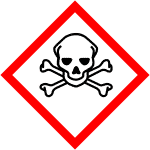
GHS06 |
|---|---|
| 信号词 | Danger |
| 危害声明 | H300 |
| 警示性声明 | P264-P301 + P310 |
| 个人防护装备 | Eyeshields;Faceshields;Gloves;type P2 (EN 143) respirator cartridges |
| 危害码 (欧洲) | T: Toxic; |
| 风险声明 (欧洲) | 25 |
| 安全声明 (欧洲) | S22;S45;S36/S37/S39 |
| 危险品运输编码 | UN 1544 6.1/PG 2 |
| WGK德国 | 3 |
| RTECS号 | NY3345000 |
| 包装等级 | II |
| 危险类别 | 6.1(a) |
| 海关编码 | 2934999090 |
Synonym:5-(Aminomethyl)-3-Isoxazolol; 5-Aminomethyl-3-Hydroxyisoxazole Section 2 - COMPOSITION, INFORMATION ON INGREDIENTS
Risk Phrases: 23/24/25 Section 3 - HAZARDS IDENTIFICATION EMERGENCY OVERVIEW
Toxic by inhalation, in contact with skin and if swallowed.The toxicological properties of this material have not been fully investigated.Highly toxic. Potential Health Effects Eye: May cause eye irritation. Skin: May cause skin irritation. Ingestion: May be fatal if swallowed. May cause irritation of the digestive tract. The toxicological properties of this substance have not been fully investigated. Inhalation: May cause respiratory tract irritation. The toxicological properties of this substance have not been fully investigated. Chronic: No information found. Section 4 - FIRST AID MEASURES Eyes: Flush eyes with plenty of water for at least 15 minutes, occasionally lifting the upper and lower eyelids. Get medical aid. Skin: Get medical aid. Flush skin with plenty of water for at least 15 minutes while removing contaminated clothing and shoes. Wash clothing before reuse. Ingestion: Never give anything by mouth to an unconscious person. Get medical aid immediately. Do NOT induce vomiting. If conscious and alert, rinse mouth and drink 2-4 cupfuls of milk or water. Inhalation: Remove from exposure and move to fresh air immediately. If not breathing, give artificial respiration. If breathing is difficult, give oxygen. Get medical aid. Notes to Physician: Section 5 - FIRE FIGHTING MEASURES General Information: As in any fire, wear a self-contained breathing apparatus in pressure-demand, MSHA/NIOSH (approved or equivalent), and full protective gear. During a fire, irritating and highly toxic gases may be generated by thermal decomposition or combustion. Runoff from fire control or dilution water may cause pollution. Extinguishing Media: Use agent most appropriate to extinguish fire. Use water spray, dry chemical, carbon dioxide, or appropriate foam. Section 6 - ACCIDENTAL RELEASE MEASURES General Information: Use proper personal protective equipment as indicated in Section 8. Spills/Leaks: Vacuum or sweep up material and place into a suitable disposal container. Clean up spills immediately, observing precautions in the Protective Equipment section. Avoid generating dusty conditions. Provide ventilation. Section 7 - HANDLING and STORAGE Handling: Wash thoroughly after handling. Remove contaminated clothing and wash before reuse. Use with adequate ventilation. Minimize dust generation and accumulation. Avoid contact with eyes, skin, and clothing. Keep container tightly closed. Avoid ingestion and inhalation. Storage: Keep container closed when not in use. Store in a tightly closed container. Store in a cool, dry, well-ventilated area away from incompatible substances. Section 8 - EXPOSURE CONTROLS, PERSONAL PROTECTION Engineering Controls: Facilities storing or utilizing this material should be equipped with an eyewash facility and a safety shower. Use adequate ventilation to keep airborne concentrations low. Exposure Limits CAS# 2763-96-4: Personal Protective Equipment Eyes: Wear appropriate protective eyeglasses or chemical safety goggles as described by OSHA's eye and face protection regulations in 29 CFR 1910.133 or European Standard EN166. Skin: Wear appropriate protective gloves to prevent skin exposure. Clothing: Wear appropriate protective clothing to minimize contact with skin. Respirators: Follow the OSHA respirator regulations found in 29 CFR 1910.134 or European Standard EN 149. Use a NIOSH/MSHA or European Standard EN 149 approved respirator if exposure limits are exceeded or if irritation or other symptoms are experienced. Section 9 - PHYSICAL AND CHEMICAL PROPERTIES Physical State: Powder Color: white Odor: Not available. pH: Not available. Vapor Pressure: Not available. Viscosity: Not available. Boiling Point: Not available. Freezing/Melting Point: 150 deg C Autoignition Temperature: Not applicable. Flash Point: Not applicable. Explosion Limits, lower: Not available. Explosion Limits, upper: Not available. Decomposition Temperature: Solubility in water: Specific Gravity/Density: Molecular Formula: C4H6N2O2.xH2O Molecular Weight: 114.10 Section 10 - STABILITY AND REACTIVITY Chemical Stability: Stable under normal temperatures and pressures. Conditions to Avoid: Incompatible materials, dust generation, excess heat, strong oxidants. Incompatibilities with Other Materials: Acid chlorides, acid anhydrides, strong acids, strong oxidizing agents. Hazardous Decomposition Products: Nitrogen oxides, carbon monoxide, irritating and toxic fumes and gases, carbon dioxide, nitrogen. Hazardous Polymerization: Has not been reported Section 11 - TOXICOLOGICAL INFORMATION RTECS#: CAS# 2763-96-4: NY3325000 LD50/LC50: CAS# 2763-96-4: Oral, mouse: LD50 = 22 mg/kg; Oral, rat: LD50 = 45 mg/kg. Carcinogenicity: Muscimol - Not listed by ACGIH, IARC, or NTP. Other: See actual entry in RTECS for complete information. Section 12 - ECOLOGICAL INFORMATION Section 13 - DISPOSAL CONSIDERATIONS Dispose of in a manner consistent with federal, state, and local regulations. Section 14 - TRANSPORT INFORMATION IATA Not regulated as a hazardous material. IMO Not regulated as a hazardous material. RID/ADR Not regulated as a hazardous material. USA RQ: CAS# 2763-96-4: 1000 lb final RQ; 454 kg final RQ Section 15 - REGULATORY INFORMATION European/International Regulations European Labeling in Accordance with EC Directives Hazard Symbols: T Risk Phrases: R 23/24/25 Toxic by inhalation, in contact with skin and if swallowed. Safety Phrases: S 23 Do not inhale gas/fumes/vapour/spray. S 24/25 Avoid contact with skin and eyes. WGK (Water Danger/Protection) CAS# 2763-96-4: 3 Canada CAS# 2763-96-4 is listed on Canada's NDSL List. CAS# 2763-96-4 is not listed on Canada's Ingredient Disclosure List. US FEDERAL TSCA CAS# 2763-96-4 is listed on the TSCA inventory. SECTION 16 - ADDITIONAL INFORMATION N/A |
|
~65% 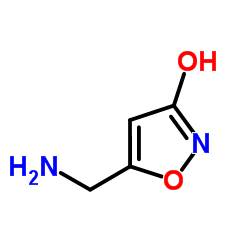
2763-96-4 |
| 文献:McCarry; Savard Tetrahedron Letters, 1981 , vol. 22, # 51 p. 5153 - 5156 |
|
~33% 
2763-96-4 |
| 文献:Konda; Takahashi; Onda Chemical and Pharmaceutical Bulletin, 1985 , vol. 33, # 3 p. 1083 - 1087 |
|
~60% 
2763-96-4 |
| 文献:Pevarello; Varasi Synthetic Communications, 1992 , vol. 22, # 13 p. 1939 - 1948 |
|
~38% 
2763-96-4 |
| 文献:Oster, Timothy A.; Harris, Thomas M. Journal of Organic Chemistry, 1983 , vol. 48, # 23 p. 4307 - 4311 |
|
~62% 
2763-96-4 |
| 文献:Chiarino, D.; Napoletano, M.; Sala, A. Tetrahedron Letters, 1986 , vol. 27, # 27 p. 3181 - 3182 |
|
~51% 
2763-96-4 |
| 文献:Jaeger; Frey 1982 , vol. No. 4, p. 817 - 820 |
|
~% 
2763-96-4 |
| 文献:Welch, W. M. Synthetic Communications, 1982 , vol. 12, # 14 p. 1089 - 1091 |
|
~% 
2763-96-4 |
| 文献:Nakamura, Norio; Tajima, Yawara; Sakai, Kiyoshi Heterocycles, 1982 , vol. 17, p. 235 - 245 |
| 上游产品 7 | |
|---|---|
| 下游产品 0 | |
 有竞争力的价格
有竞争力的价格匹配竞争对手的价格
 极速物流
极速物流效率为先
 技术支持
技术支持专业经验 贴心服务
 现货库存
现货库存50000+库存


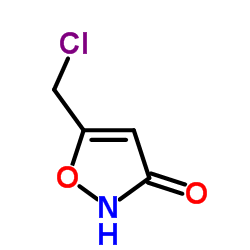

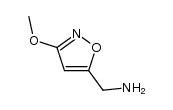
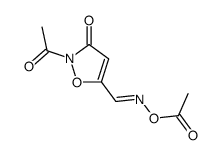
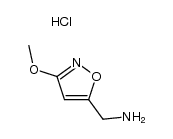
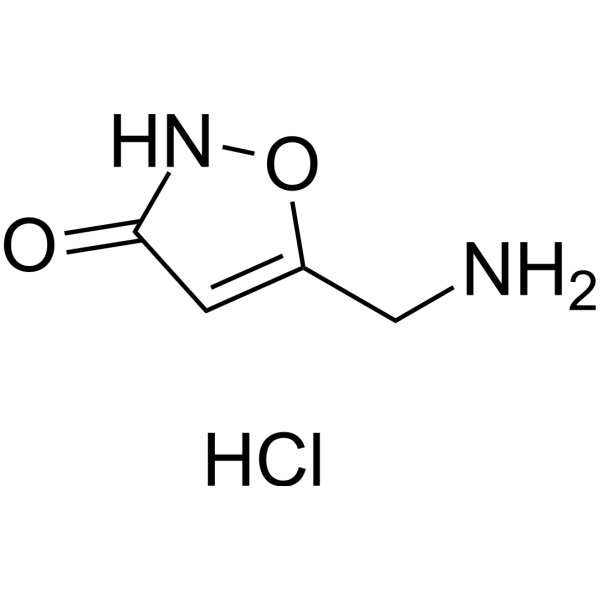
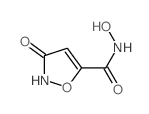
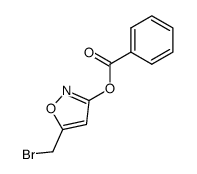

 浙公网安备 33010802013016号
浙公网安备 33010802013016号